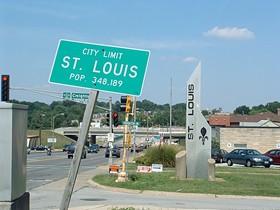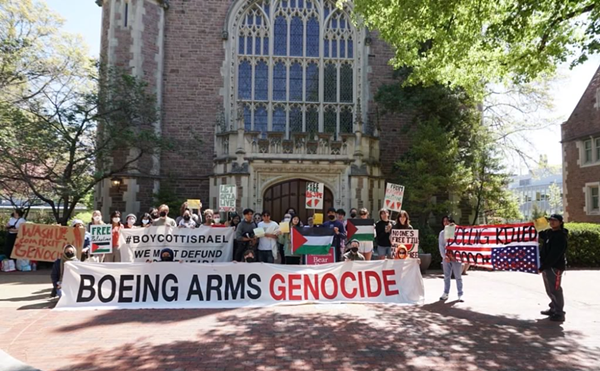On August 22, 1876, in what was undoubtedly the stupidest move ever in the history of St. Louis, St. Louis City and St. Louis County decided to separate. Like the American Revolution, the great event was prompted by taxes -- the 310,000 city residents didn't feel like wasting money on the 27,000 county residents and reasoned that the city wouldn't expand much further west than Grand Boulevard. (The boundary was eventually set at Skinker Boulevard so the city could claim Forest Park.)
Ah, short-sightedness! Thy name is St. Louis voters! Within 25 years, the city found itself pushing against its western border at Skinker and began to regret the decision to divorce itself from the county.
Daily RFT doesn't normally recommend high-school history papers, even ones written for AP classes, as useful and informative reading material, but we make an exception here for "The History of Possibilities of a St. Louis City-County Reunification" by Joe Huber, a junior at Christian Brothers College High School. You can find the entire paper posted here on Urban STL.
Among other things, Huber describes various attempts by the city to reunite with the county, the first occurring as early as 1926. Sadly, by then the county had already started to consider the city a detriment and rejected the plan when the matter came up for a vote. (City voters supported it.)
After paying a professor a lot of money to conduct a serious study of the region, a group of city and county leaders proposed a governing the reunited city and county under a borough system like the one used by New York City. In 1930, voters shot down this plan, too. A similar plan but with districts instead of boroughs, also met defeat in 1959.
Currently there are 91 municipalities in the county, not counting St. Louis City, which Huber considers an overabundance, not to mention a waste of resources.
The reason why the merging of municipalities inside St. Louis County is so important to the larger issue of the reasons why the city and county need to reunite is because of the duplication of services, divided government, and failure to plan as a collective region for future economic growth. When St. Louis is divided into two counties and the one county, St. Louis County has 91 municipalities and other incorporated areas, the region as a whole fails because each municipality will consistently compete against each other for jobs, people, and money. Also, by having this many municipalities the region wastes valuable tax dollars on duplicating services that could otherwise be spent for other things.
There would be other economic benefits of reunification, Huber argues. City and county municipalities wouldn't have to compete against each other for jobs (he cites the battle between city and county for the privilege of housing Centene). The consolidation of all the airports and river ports into one big Port Authority could make St. Louis attractive to foreign governments as a trade hub.
And then there's our pride: A merger would make the St. Louis metropolitan area the country's seventh largest, just behind Phoenix. (Hey, we could be a big ole' sprawl, too!) Plus, averaging the county's crime rate with the city's would bring the region's overall rate down. No word, though, about how a merger would affect our STD ranking.






